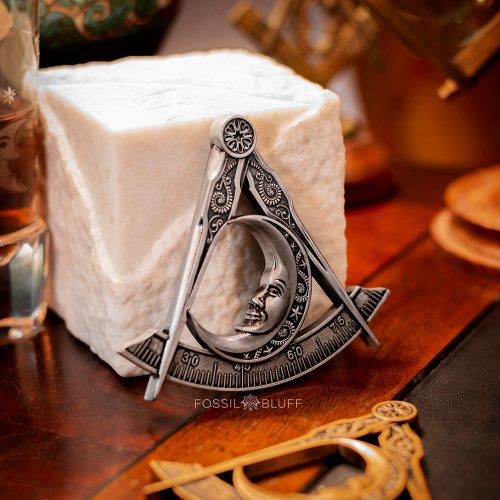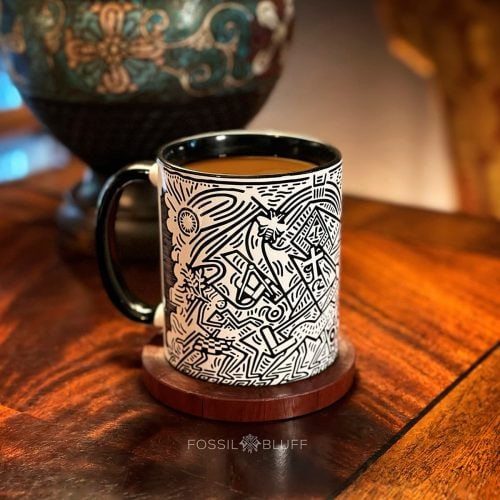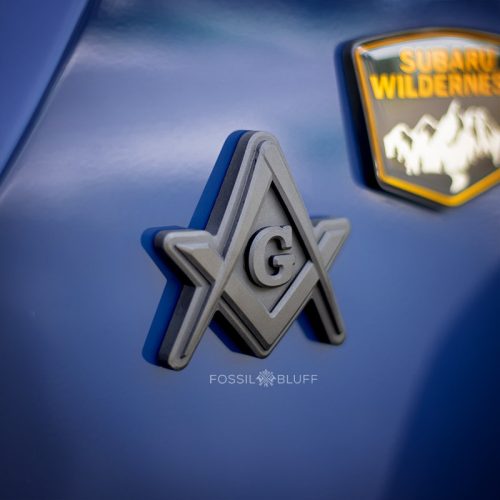A year has passed since I made a common gavel for the Master of our Lodge. I knew with some certainty that this year I would produce another one of a kind piece. This year, the incoming Master of the lodge requested a Setting Maul, as it’s known in Masonry, or more commonly known as a Carving Mallet.
Again, durability being one of the major considerations for this project, I selected Walnut as my wood of choice. This type of Walnut however was somewhat darker and felt a bit heavier than the block I used for the common gavel. Perhaps this piece is from an old growth source. Old growth meaning that the timber grew in a dense forest, making for slower growth, which results in more tree rings per inch or harder wood.
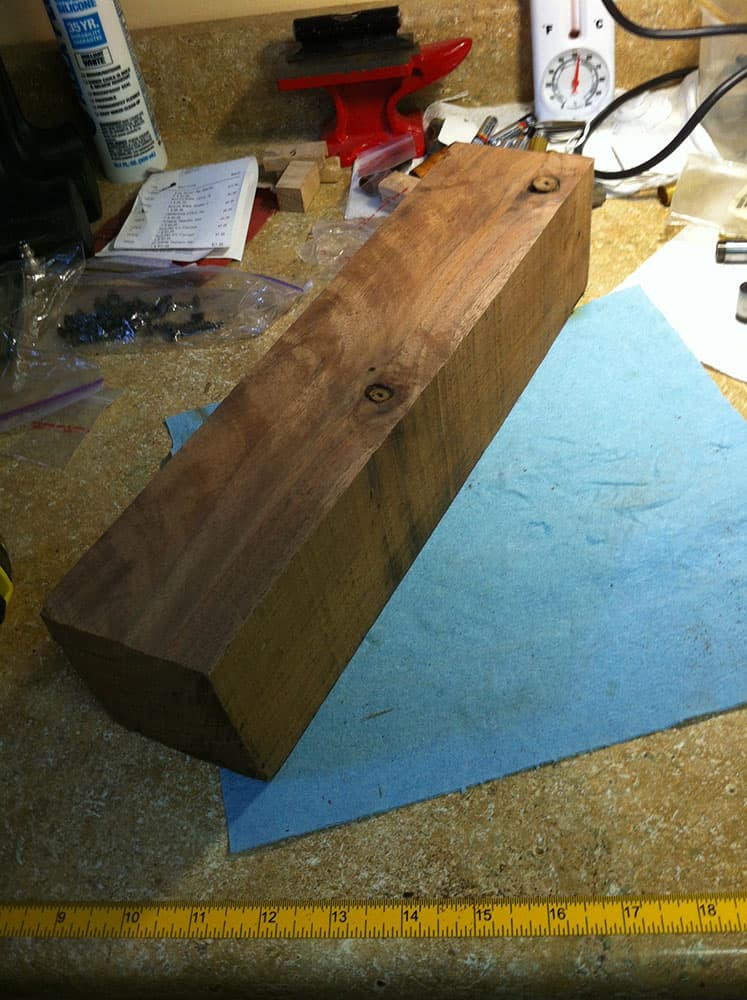
Unlike the common gavel project, where the head was sanded and not turned on a lathe, there was an incredible amount of sawdust that was generated! Turning the square piece of wood into a cylinder or column was the first step. In this primitive shape, I could see what I was working with and plan the overall size and proportion of the final piece.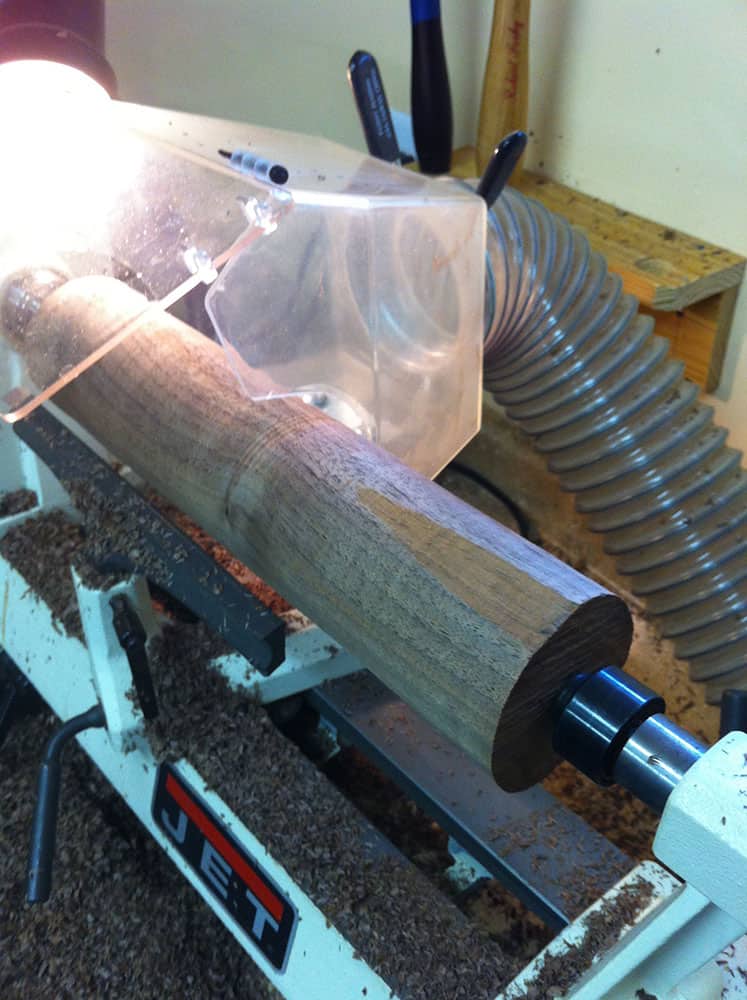
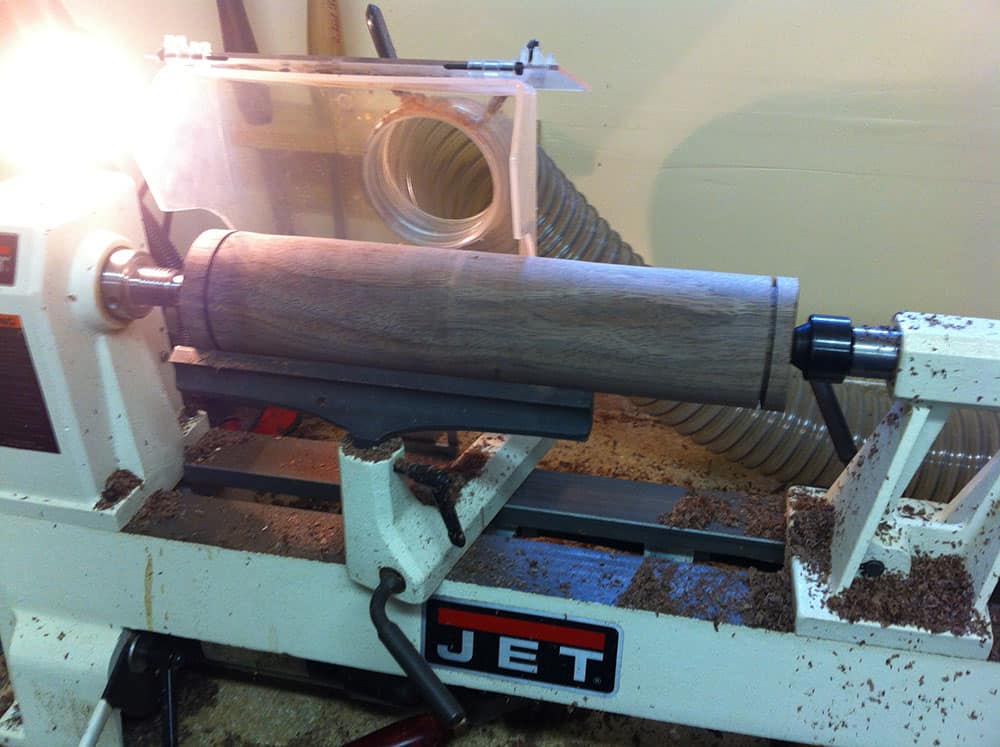
Using my Fibonacci gauge, which I acquired from Woodpeckers, I then measured out the proportions of the base versus the handle and the diameter of the base to the diameter of the handle. This is the first time I have applied the golden proportion to a project and I was a bit nervous that it would result in an odd looking Setting Maul. Unsurprisingly, this method of measuring, by using Sacred Geometry, results in absolutely perfectly weighted and proportioned creations! If you want one of these excellent gauges, call Woodpeckers. They have some in their warehouse, but not for sale on their website.
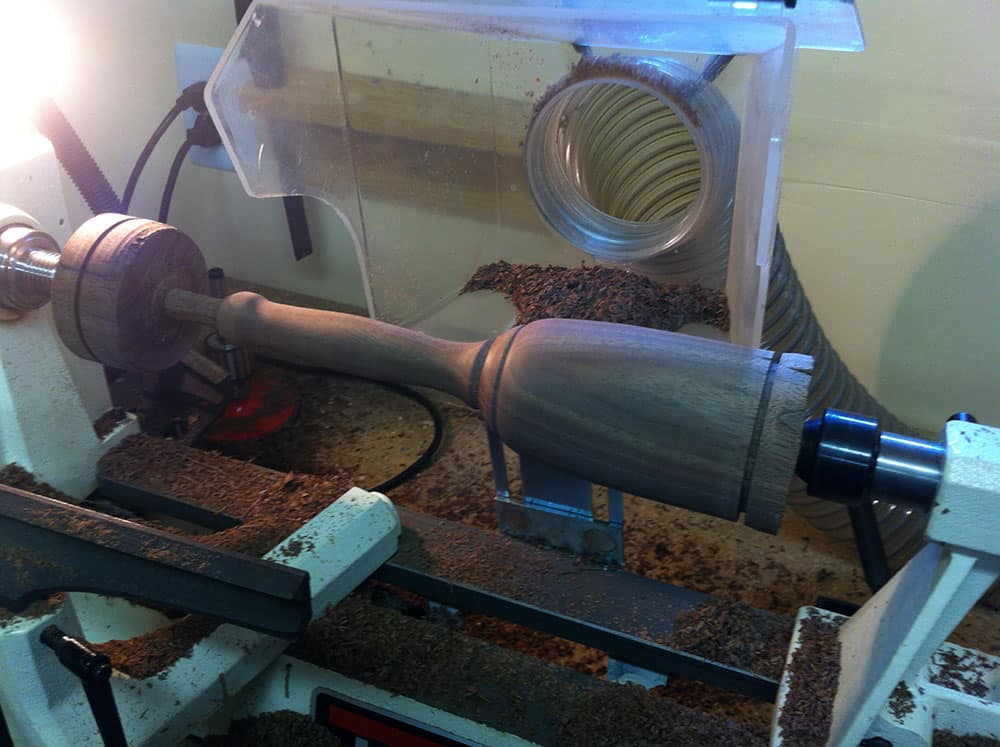
After several days of pondering the philosophical meaning and creative possibilities of this working tool, I concluded that I would encode a message onto base of the Maul. I chose a particular method to encode the message which requires a decoding ‘key.’ I started carving with purpose and, in the completed piece; the key to unlock the message is part of Setting Maul.
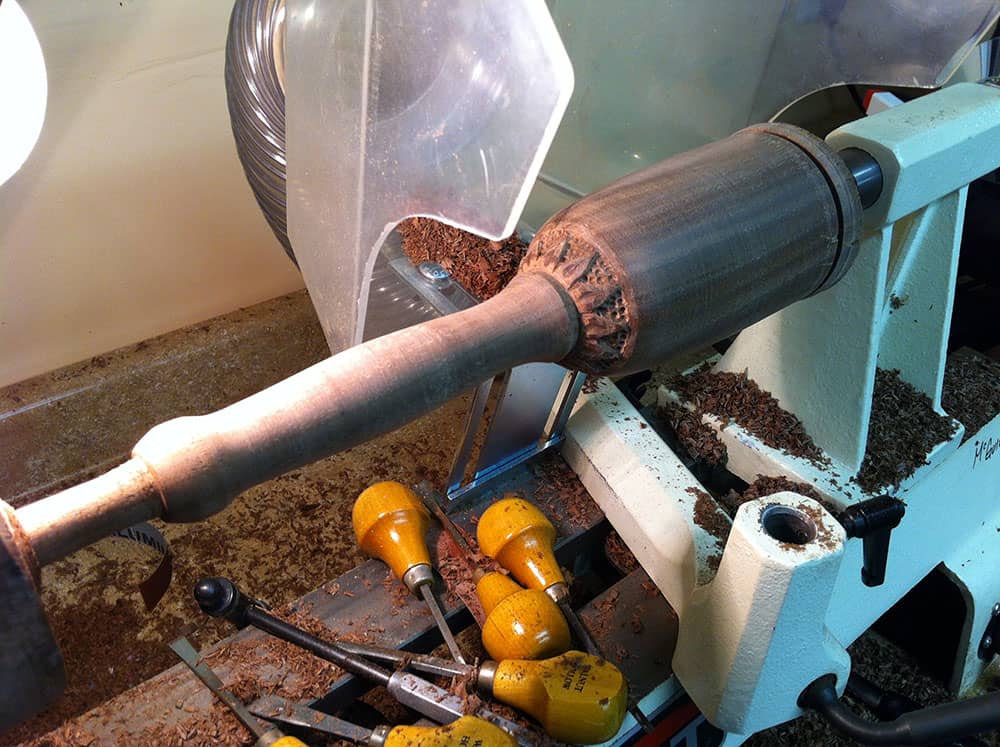
I took one final measurement with my Fibonacci gauge and parted the wood from the head and tail stock on the lathe.
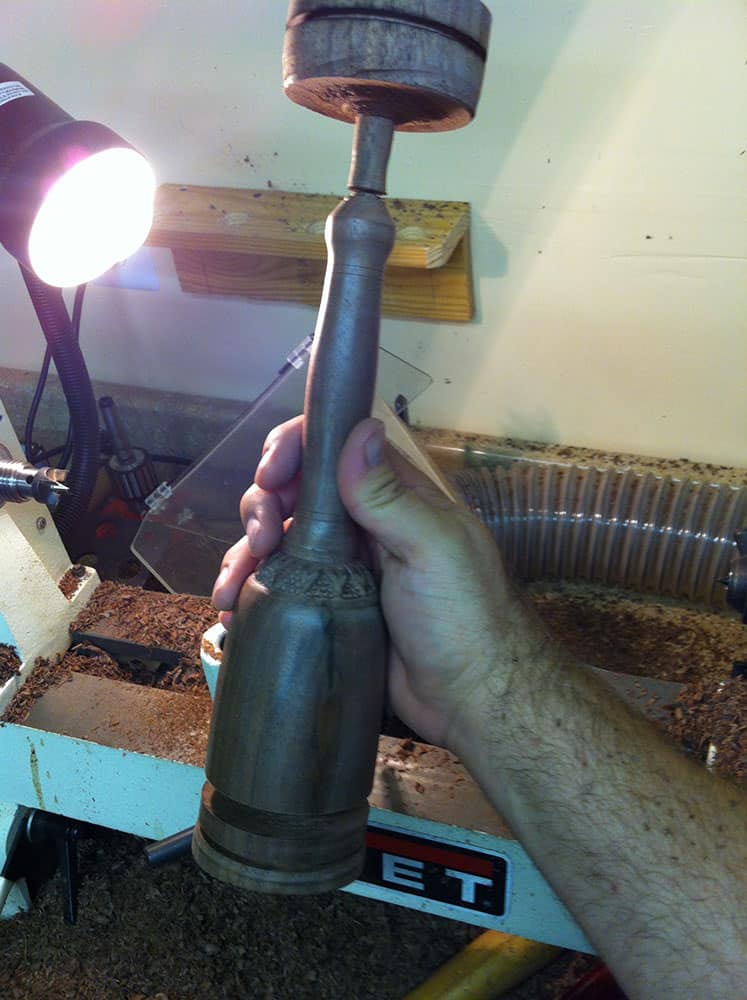
I brought the Setting Maul to my computer workstation and took some measurements. The circumference of the base of the piece is 9 inches and 8.25 inches at the top just before it transitions into the hand carved area. The usable vertical space was 2.75 inches.
I then began to compose a meaningful message. Once completed, I encrypted the message and printed it for a quick ‘dry fit’ before sending the piece through the Epilog laser at Round Rock Awards and Engraving.
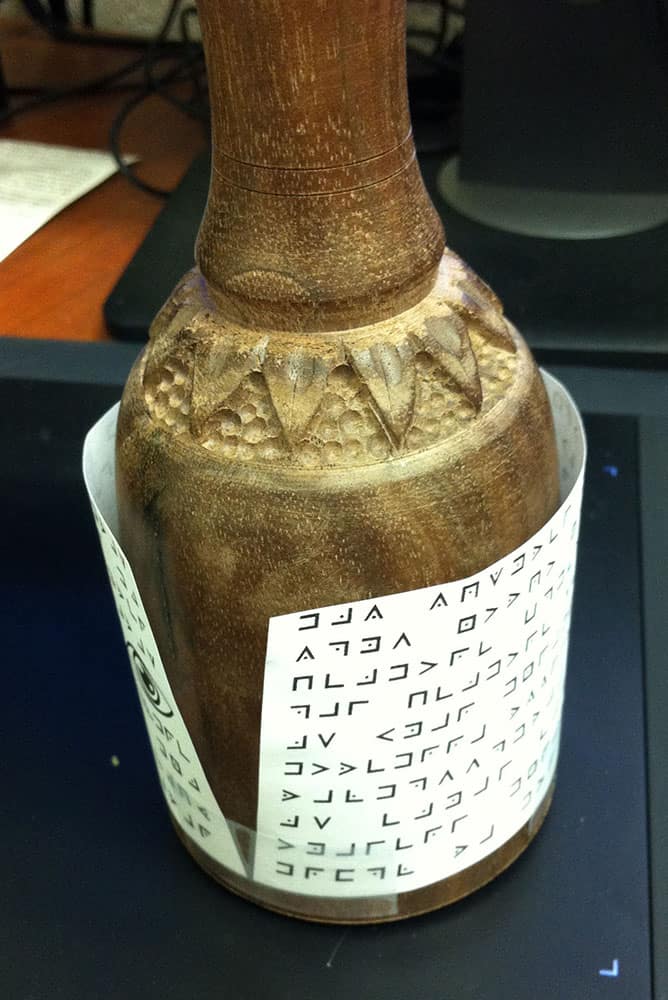
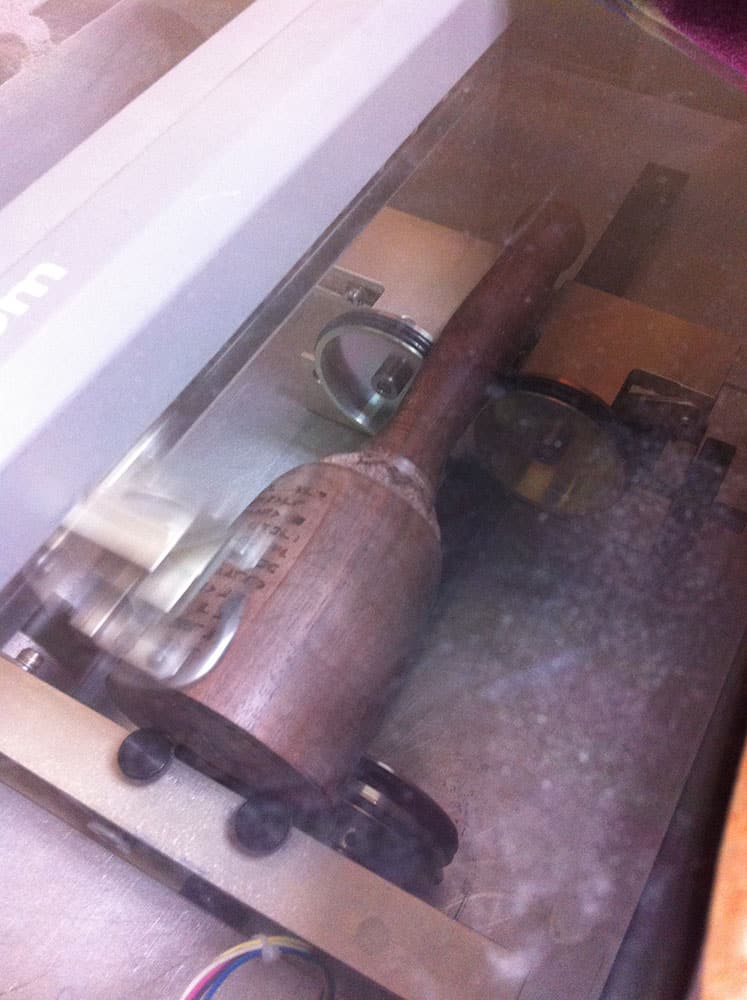
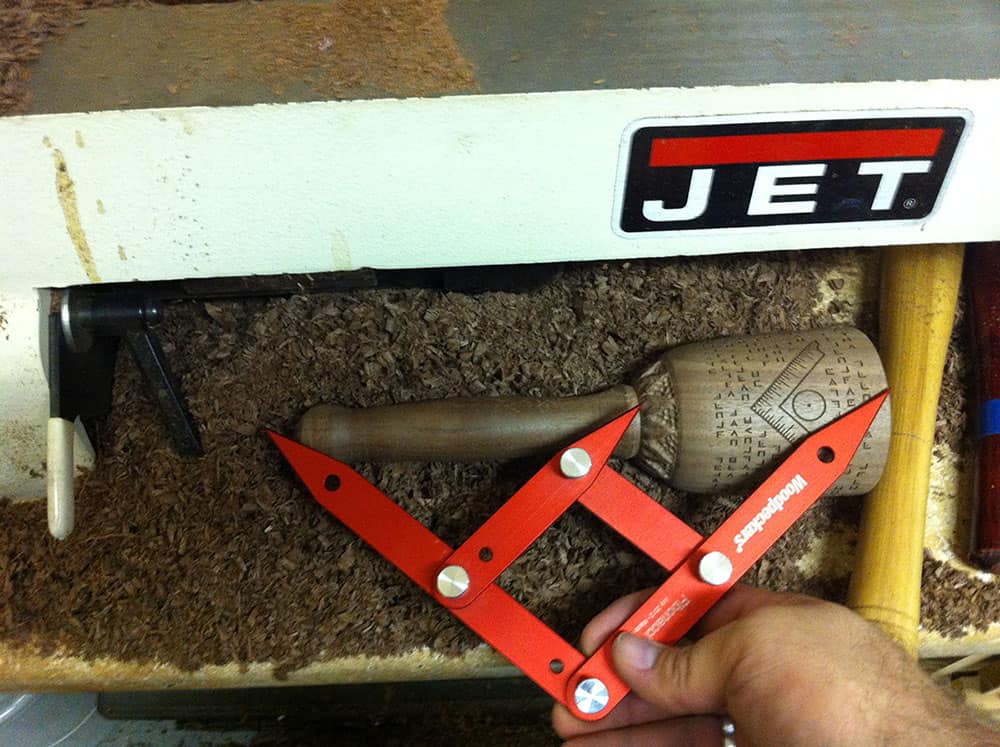
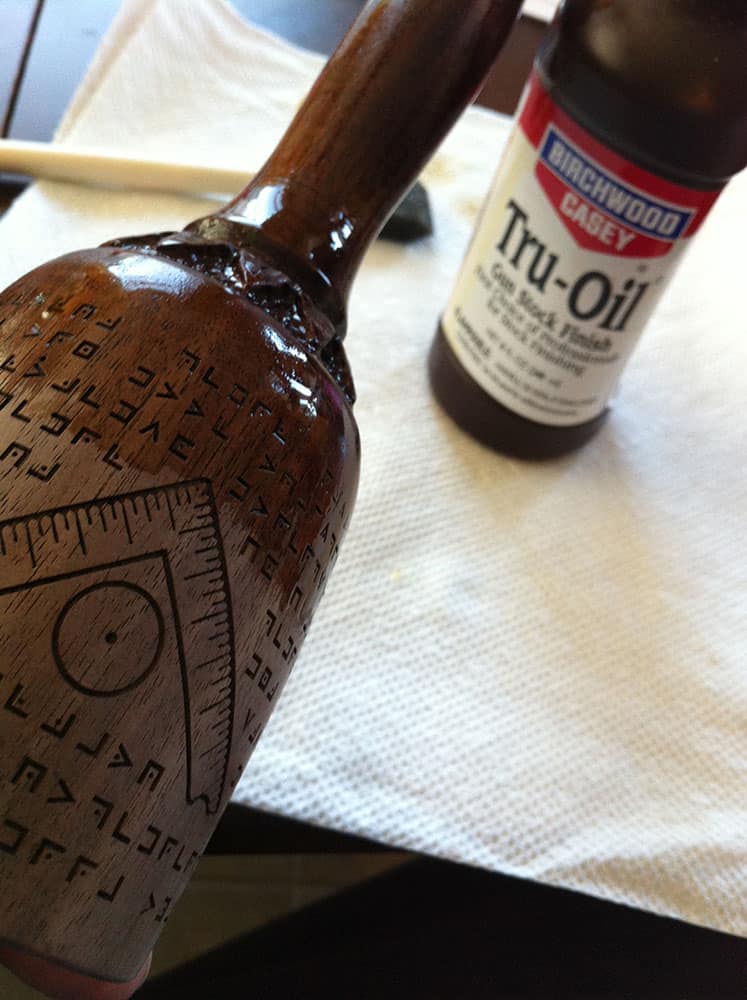
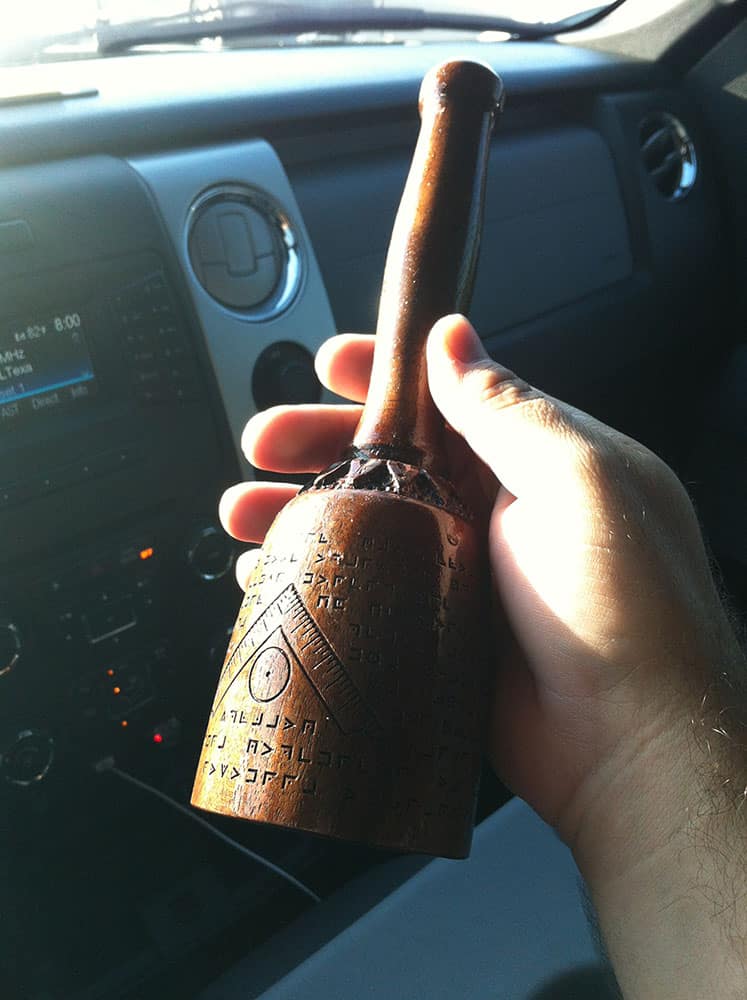
Final thoughts. Why a Setting Maul or carving mallet? The answer is obvious to any Master Mason, but what about beyond that? Breaking off the rough parts of stones with a common stone masons hammer will not produce a stone with a smooth surface. You cannot make that stone ‘perfect.’ You would need a chisel and something to drive that chisel into the material. The Setting maul provides the force needed to do that. The Master of the lodge exercises his force every time the gavel is called into action. Why add non-ergonomic carvings in the transition between the handle and the head? It occurred to me that it would be nice if the Master of the lodge would be remained of how important the use of a gavel, or in this case the Setting Maul, rap should be. The feel of the hand carved decorations, on the Maul, pressed against the palm of his hand should cause him to pause or at least offer a reminder how impactful the simple action of raping the gavel could be.





 Free expedited USPS Priority Mail shipping within the US.
Free expedited USPS Priority Mail shipping within the US. Each work of art is handcrafted with meticulous attention to detail.
Each work of art is handcrafted with meticulous attention to detail. Gift cards are the perfect gift for any occasion.
Gift cards are the perfect gift for any occasion.
